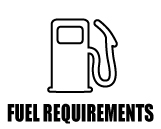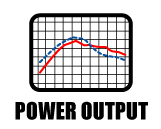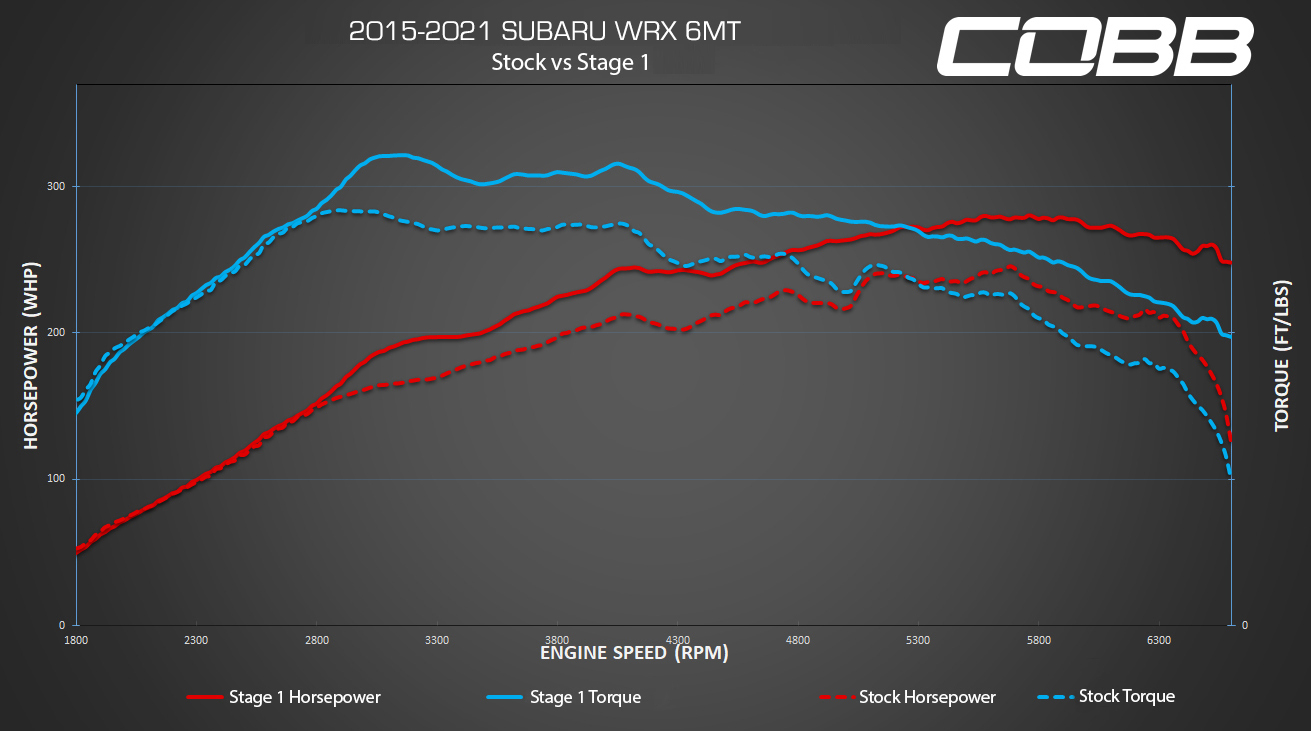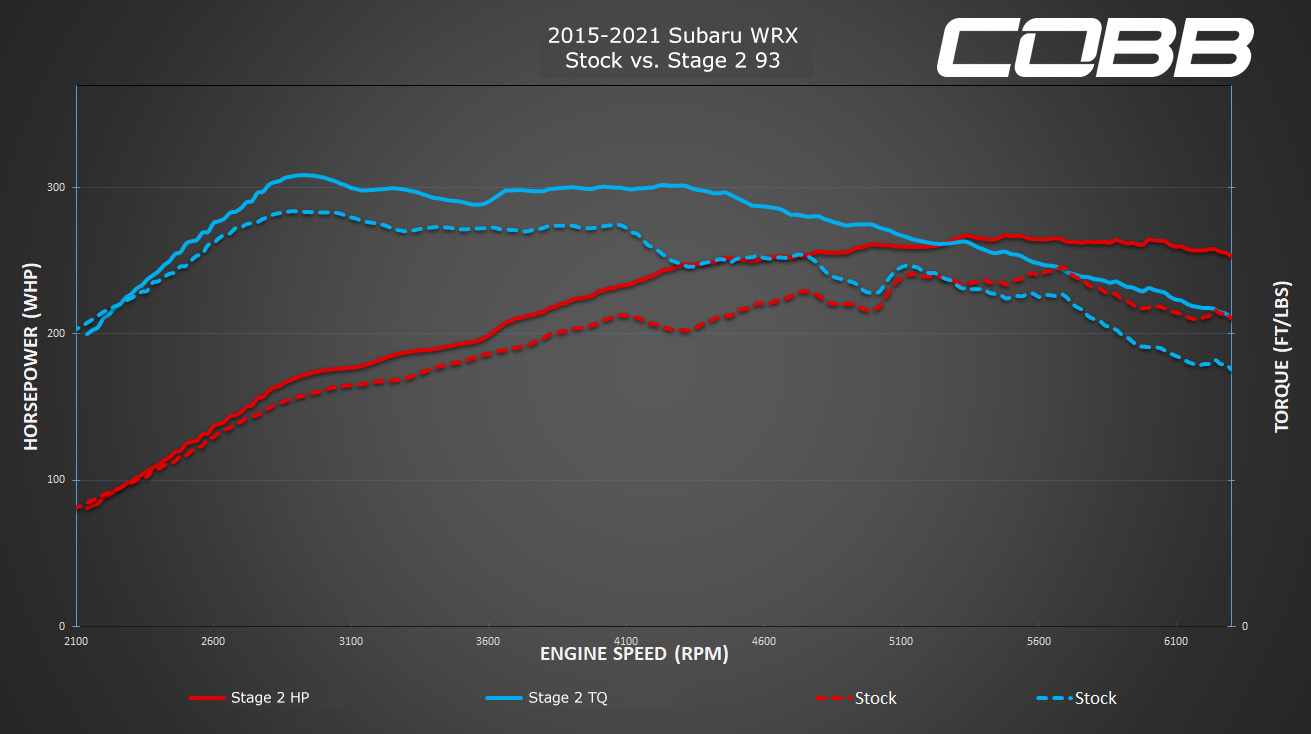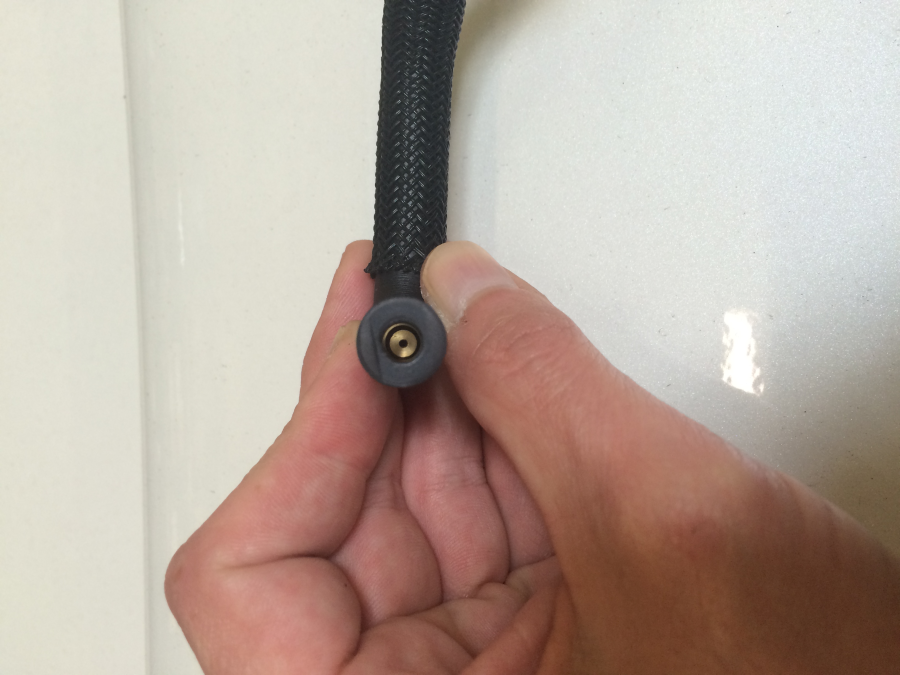Map Notes for VA WRX 6MT Australian Domestic Market (ADM)
Supported Vehicles:
- Some model year 2015-2020 WRX 6MT (North American, ADM Spec) vehicles.
*To confirm your model year, you can refer to the tenth value in the VIN number on the vehicle. For model year 2001-2009, the 10th value in the VIN will be the last digit of the model year. For model year 2010-2019, the 10th value in the VIN will be A-K, starting with 2010, ending with 2019.
Current Map Revision:
| Map | ADM 2015 WRX 6MT | ADM 2016 WRX 6MT | ADM 2017 WRX 6MT | ADM 2018-2019 WRX 6MT | ADM 2020-2021 WRX 6MT |
|---|---|---|---|---|---|
| Stage1 | v201 | v202 | v302 | v303 | v303 |
| Stage1+SF | v201 | v202 | v302 | v303 | v303 |
| Stage1+Redline | v201 | v202 | v302 | v303 | v303 |
| Stage2 v201 | v201 | v202 | v302 | v303 | v303 |
| Stage2+SF | v201 | v202 | v302 | v303 | v303 |
Accessport Firmware:
AP3-SUB-004: 1.7.4.2-18500
Stage1+ Redline, SF
Non-Performance Maps
Anti-Theft Mode
- Will not allow the vehicle to start
Stage1 Economy
Fuel Requirements: 91 octane or better
Intake Requirements: Stock airbox and stock air filter
Exhaust Requirements: Stock exhaust
Boost Targets: Mechanical minimum
Rev Limiter: 5500RPM
*Not intended for aggressive driving*
Stage1 Valet
- Fuel Requirements:91 octane or better
- Intake Requirements: Stock airbox and stock air filter
- Exhaust Requirements: Stock exhaust
- Boost Targets: Mechanical minimum
- Rev Limiter: 4000 RPM
Stage1+BigSF Economy
- Fuel Requirements:91 octane or better
- Intake Requirements: COBB Tuning BigSF Intake and Airbox System 745110
Exhaust Requirements: Stock exhaust
Boost Targets: Mechanical minimum
Rev Limiter: 5500RPM
*Not intended for aggressive driving*
Stage1+BigSF Valet
- Fuel Requirements:91 octane or better
- Intake Requirements: COBB Big SF Intake
- Exhaust Requirements: Stock exhaust
- Boost Targets: Mechanical minimum
- Rev Limiter: 4000 RPM
Stage1+Redline Economy
- Fuel Requirements:91 octane or better
- Intake Requirements: COBB Tuning BigSF Intake and Airbox System 745110
Exhaust Requirements: Stock exhaust
Boost Targets: Mechanical minimum
Rev Limiter: 5500RPM
*Not intended for aggressive driving*
Stage1+Redline Valet
- Fuel Requirements:91 octane or better
- Intake Requirements: COBB Big SF Intake
- Exhaust Requirements: Stock exhaust
- Boost Targets: Mechanical minimum
- Rev Limiter: 4000 RPM
Stage2 Economy
- Fuel Requirements:91 octane or better
- Intake Requirements: Stock airbox and stock air filter
Exhaust Requirements:
COBB Catted J-pipe with high flow catalytic converter 541204
COBB Titanium 515140 or Stainless 515132 cat-back exhaust
- Boost Control Requirements: Deleted 2nd restrictor pill (between the tee and wastegate actuator).
- Boost Targets: Mechanical minimum
- Rev Limiter: 5500RPM
*Not intended for aggressive driving*
Stage2 Valet
- Fuel Requirements:91 octane or better
- Intake Requirements: Stock airbox and stock air filter
Exhaust Requirements:
COBB Catted J-pipe with high flow catalytic converter 541204
COBB Titanium 515140 or Stainless 515132 cat-back exhaust
- Boost Control Requirements: Deleted 2nd restrictor pill (between the tee and wastegate actuator).
- Boost Targets: Mechanical minimum
- Rev Limiter: 4000 RPM
Stage2+BigSF Economy
- Fuel Requirements:91 octane or better
- Intake Requirements: COBB Tuning BigSF Intake and Airbox System 745110
Exhaust Requirements:
COBB Catted J-pipe with high flow catalytic converter 541204
COBB Titanium 515140 or Stainless 515132 cat-back exhaust
- Boost Control Requirements: Deleted 2nd restrictor pill (between the tee and wastegate actuator).
- Boost Targets: Mechanical minimum
- Rev Limiter: 5500RPM
*Not intended for aggressive driving*
Stage2+BigSF Valet: MY2015-MY2017 only
- Fuel Requirements:91 octane or better
- Intake Requirements: COBB Tuning BigSF Intake and Airbox System 745110
Exhaust Requirements:
COBB Catted J-pipe with high flow catalytic converter 541204
COBB Titanium 515140 or Stainless 515132 cat-back exhaust
- Boost Control Requirements: Deleted 2nd restrictor pill (between the tee and wastegate actuator).
- Boost Targets: Mechanical minimum
- Rev Limiter: 4000 RPM
Monitoring Boost Levels:
The best way to determine if you are hitting target boost is to watch the TD Boost Error parameter. This parameter is your target boost (including altitude and temperature compensations) minus your actual boost (negative values mean you are over the target by the amount while positive values mean you are under). Ideally, you want this value to be between 0 and 1.0 at wide-open throttle (WOT), but -1.5 to 1.5 is acceptable assuming that you don't have any significant knock corrections. Overboosting is more likely to occur in higher gears and with colder outside temperatures, so be sure to verify boost levels during these conditions.
High Altitude:
A quick note for those of you that live at higher altitudes: it is common for turbocharged cars at higher altitudes to run less boost pressure due to lower air pressure and air density. Your turbocharger has to work harder to compress a less dense air mass compared to the same turbocharger at sea level. This must be factored in when determining if your turbocharger is running the proper amount of boost pressure and not being pushed beyond its efficiency range.
Example: If you live in Denver at 5280 ft. and are trying to run a peak boost pressure of 15 psi, your turbocharger has to work the equivalent of making ~17.5 psi at sea level.
There are barometric compensations within the factory ECU that lower boost targets as you climb in altitude in an effort to keep the turbocharger in its optimal range. The COBB performance maps utilize these compensations and therefore, it is perfectly normal for the final boost target to be lower than what is listed for your map.
Flat-Foot Shifting and Launch Control:
Flat-foot shifting and Launch Control have been added to v200 and higher OTS maps (manual transmission only). Older revisions of maps are still supported but will need to be resaved in the latest version of Accesstuner for the features to work.
Launch Control – Allows for setting a specific RPM threshold for launching from a standstill.
- Launch control RPM can be set via the Accessport or the vehicle's cruise control buttons.
- To set via cruise control: make sure vehicle is stationary, clutch pedal is in, cruise control is off and rev engine to desired launch RPM (minimum 2500) and then press and release the cruise SET button. This launch RPM will be retained until the next map reflash, ECU reset, battery disconnect, or Accessport adjustment. Hitting the cruise CANCEL button when the vehicle is stationary, the clutch pedal is in, and cruise control is off will clear the launch RPM.
- To set via Accessport, connect the Accessport to the car, turn the ignition ON (or start engine), and adjust via the Accessport's Tune -> Adjustments -> Launch Control menu. This launch RPM will be retained until the next map reflash, ECU reset, battery disconnect, or cruise control adjustment. If this menu is not found, update the Accessport to the latest firmware version.
- The default launch RPM for the OTS maps is 8000 RPM which effectively disables the feature until it is adjusted via cruise control buttons or Accessport.
Flat-Foot Shifting
- Adjustable via the Accessport
- To set via Accessport, connect the Accessport to the car, turn the ignition ON (or start engine), and adjust via the Accessport's Tune -> Adjustments -> Flat-Foot Shift menu. This flat-foot shift RPM will be retained until the next map reflash, ECU reset, or battery disconnect. If this menu is not found, update the Accessport to the latest firmware version.
- The default flat-foot shift RPM for the OTS maps is 8000 RPM which effectively disables the feature until it is adjusted via the Accessport.
WARNING: Using the launch control and/or flat-foot shift feature puts more stress on the transmission, drivetrain, engine and other components and can result in increased wear of any of these components as well as the potential for catastrophic failure. The more aggressive driving characteristics that are possible with the launch control and/or flat-foot shift feature could also potentially result in an unexpected loss of vehicle control. This feature should only be used in controlled off-road racing conditions where all parties understand the risks involved.
Boost Control System Modification:
- Full Walkthrough: VA WRX Wastegate Secondary Restrictor Pill Removal
Due to the boost spiking that is common on the 2015+ WRX (that becomes even worse with exhaust upgrades), our Stage2 maps require the deletion of the restrictor pill. If this is not done, underboosting will result. The hose and pill in question are shown below. The entire hose can be replaced with a new section of 6mm or 1/4" silicone vacuum hose (clamp each end securely!) and the factory hose can be set aside. Alternately, you may remove the pill from the OEM hose, set the pill aside and reinstall the hose.
Revision Notes:
| Revision: | Notes: |
|---|---|
| v303 |
|
| v302 | 2017 USDM WRX CVT/MT: Fixed an issue where real-time tuning and real-time map switching was disabled for the "MAF Calibration" table which caused the ECU to always use the reflashed values only for this table.
|
| v301 |
|
| v300 | Supports the latest Subaru ECU revision. Merged Subaru calibration for the latest injector timing changes. |
| v201 |
|
| v200 |
|
| v115 |
|
| v114 | Addresses an infrequent brief interruption of torque/power delivery introduced in the v113 maps. |
| v113 |
|
| v109 |
|
| v105 |
|
| v100 | Initial Release |
Copyright 2024 © COBB Tuning Products LLC. All Rights Reserved. | www.cobbtuning.com

